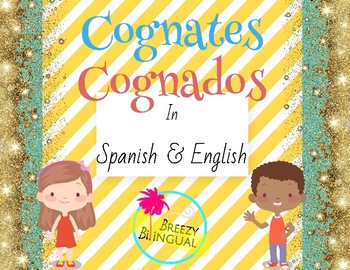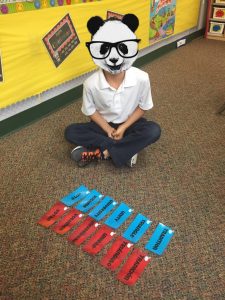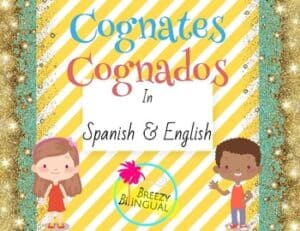As a 7th year Two-Way Dual Language teacher I have learned to appreciate different tools & strategies to help my students become better readers in two languages. An effective tool I have come to rely on more each year is cognate words (los cognados). I feel that this would benefit any dual language teacher, bilingual teacher, ESL teacher and any one with a LEP (Limited English Proficient) or LSP (Limited Spanish Proficient) student. I feel that their is a lack of information and promotion on these types of words. I come to learn that many teachers do not even know about them. In a nutshell cognates are words in two languages that have the same or similar meaning and spelling. Example: Spanish and English have latin or greek roots with the same meaning. The Spanish language borrow many words from English and English borrows many words from Spanish. By knowing a few simple rules about cognates, students can quickly expand their vocabulary. When students are given this knowledge they in turn can discover the ability to figure out new & unknown words in their second language. Once I teach this to my students it automatically becomes a joy to share with the teacher any cognates they come across in our daily activities and lessons. I fully acknowledge there efforts and even encourage them by rewarding them with a ticket (my reward system). I will show you some examples here of cognate words. They red are Spanish words and the blue are English.

Cognates words/ Los Cognados
chocolate – chocolate
doctor – doctor
problema – problem
complicado – complicated
artista – artist
carro – car
mapa – map
cono – cone
esfera – sphere
tubo – tube
radio – radio
sistema – system
sopa – soup
tomate – tomato
I listed here only a very small portion of the thousands of words that are cognates between Spanish and English. So, HAHA, I use this to my great advantage when a student announces that he does not know how to read in Spanish. My most joyful reply usually is, “well, did you know you already know hundreds of words in Spanish because you already know them in English”!!!! They give me “the look” and I say, “yes, cognates” and BOOM they go back to reading. It works like a charm! In all reality thought it beneficial for both English & Spanish natives because the student is effectively learning Spanish and English with a vocabulary of almost 1000 words without even trying. I use cognates as a “when I’m finished” activity and as a center. They are given the choice to work by themselves or with a partner. All the Spanish words are always in red and English always in blue. They get a stack and work together trying to match the cognates with the correct pair. Once they have completed the match I check their work and they begin to read each card aloud together in both languages.
My goal today is to spark some cognate excitement in our educational world. Lets teach the students how them and make them successful. Lets build their self esteem and tell them you ALREADY know this word!!! Keep researching and find a good list of words to get you started. I like the list Colorincolorado.org provides. Click here for the Cognate list . Also I have the set of cards I created that I use in my class that are already in blue and red. It has 129 pairs & 258 cards in total ready to be laminated and used. Click on the image below if you are interested. I hope this was useful information and if you have any questions please feel free to email me. Thank you and have a blessed day!





I have a second and fourth grade DI student. It’s been hard to find DI resources for them. Do you have any recommendations?
Also, any chance your shirts may reflect bilingual school psychologist? I would love to buy 😄